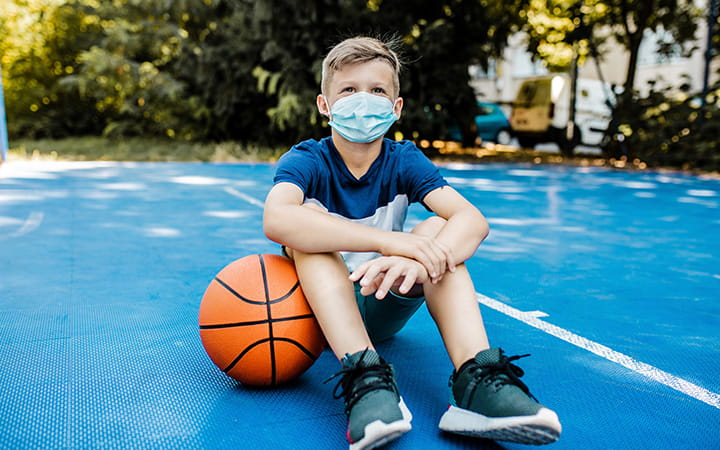The COVID-19 Delta Variant and What It Means for Kids
July 11, 2021
 University Hospitals Rainbow Babies & Children'sExperts in Children's Health
University Hospitals Rainbow Babies & Children'sExperts in Children's Health

The fast-spreading COVID-19 mutation known as the Delta variant has gained a foothold in the United States. The new variant renews concerns about how to keep children safe, especially with another school year around the corner.
Research is showing that fully vaccinated people have significant protection against the Delta variant, which now accounts for most new COVID-19 infections in the nation. But with vaccination rates low in many parts of the country – and children under 12 not yet eligible for vaccination – the virus has ample opportunity to spread.
The Delta variant is more transmissible than earlier strains of the virus, though it does not appear to cause more severe disease.
While the county as a whole has relaxed COVID-19 restrictions, Amy Edwards, MD, pediatric infectious disease specialist at UH Rainbow, stresses that mask-wearing in crowded indoor settings remains important for unvaccinated children.
A Conundrum for Families
The Centers for Disease Control and Prevention (CDC) last week issued guidance for K-12 schools along those lines. The CDC said unvaccinated students and staff should be masked this fall. Some states and school districts, however, have dropped mask requirements.
The situation has posed a conundrum for many families with vaccinated adults and unvaccinated children.
When it comes to travel, for example, the CDC recommends unvaccinated people delay travel, but that children who travel with vaccinated adults follow mask and distancing guidelines.
Virus Spread Will Differ By U.S. Region
Dr. Edwards says much remains unknown about Delta because data from India, where it originated, is not reliable.
“India has the most experience with it, but they were so overwhelmed, the data coming from there isn’t close to being accurate,” she says. “What that means is we have to wait and see how the Delta variant will behave in the population. By fall, it’s going to be very clear what the Delta variant is going to do.”
Dr. Edwards and other experts say virus spread will likely be higher in some areas and lower in others, depending on vaccination rates.
“Ohio is less than 50 percent vaccinated. We don’t know what that will mean, but it’s concerning,” she says.
Assessing Risk for Your Child
Children remain at very low risk for severe disease and death from COVID-19, according to a new study.
Most children who get COVID-19 are infected by an adult -- a parent, caregiver or relative. So vaccination among adults is the best way to protect unvaccinated children, Dr. Edwards says.
In assessing risk to children, parents should take into account vaccination rates and infection rates in their area. For instance, in some Ohio counties, less than 30 percent of the population was fully vaccinated as of last week, while in Cuyahoga County about 50 percent were vaccinated.
“I think the new normal is focus on what’s happening in your region, in your schools and workplaces,” Dr. Edwards says. “It’s become a more localized concern.”
Related Links
University Hospitals Rainbow Babies & Children’s Hospital provides expert pediatric care for infants, children and adolescents. With expertise in 16 medical and 12 surgical specialties, our team of doctors, nurses and other clinical staff has experience in diagnosing and treating children for a range of medical issues, from common childhood illnesses to complex conditions. Learn more about the nationally recognized pediatric medical care at UH Rainbow Babies.


